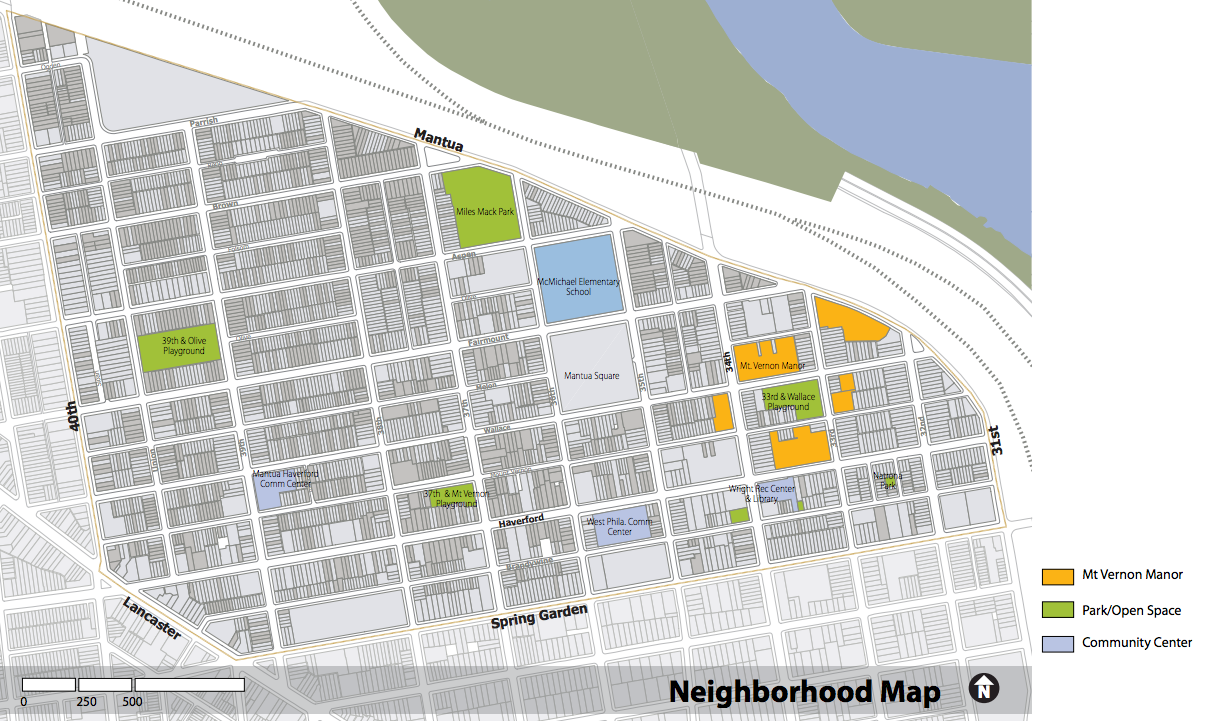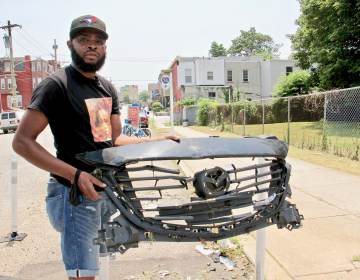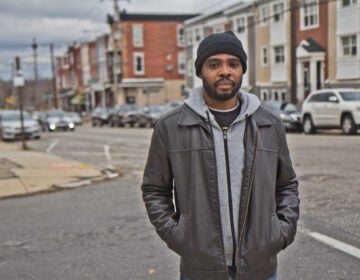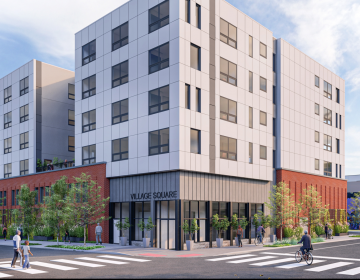Designing a community improvement plan brings Mantua residents together

It took two years to complete the Mantua Transformation plan, but much less time for the planning effort to start changing that community.
It began when non-profit Mt. Vernon Manor Inc., which runs a nine-building, Department of Housing and Urban Development-assisted residential community in Mantua, won a Choice Neighborhoods Initiative planning grant from HUD to improve not only those buildings, but the community.
A steering committee of non-profits, residents, for-profits and city held several open-house sessions in which community members identified neighborhood priorities, including education, job creation and training, safety, youth development and civic involvement. About 250 people were organized into eight task forces, one for each priority, and they began meeting monthly to develop a plan for each goal.
“Wonderful things emerged,” We Are Mantua Community Economic Development Consultant Donna Griffin, told city planners at their July meeting.
In December 2012, Mantua Civic Association – the neighborhood’s first civic association – held its inaugural meeting.
A Mantua Youth Advisory Group was established, and is currently holding a six-week summer leadership academy for young residents, the “leaders of tomorrow,” Griffin said.
A summer activities program for young people was launched last summer, and is now held year-round at the McMichael School and rec centers.
The McMichael School has a home-school organization, which Griffith said presented a plan to the school district which got McMichael removed from the school closings list. In September, McMichael will open as a Promise Academy.
Griffin, some of the commissioners and city planner Andrew Meloney, who worked with Mantua on the plan, all talked about the challenges this community faces. Properties, residential and commercial, have been abandoned. Crime is high. The population dropped from a high of 19,000 people in the 1950s to 6,000 residents today.
“Traditionally, this is a community in which residents were not very engaged at all, from a civic perspective. I think that contributed a great deal to the disinvestment that occurred there,” Griffin said. “As a result of the process, the community is becoming more unified, and better positioned for the revitalization described in the plan,” Griffin said.
Planning Commission Chairman and Deputy Mayor Alan Greenberger agreed community organization and cohesion was a huge step – one he had earlier in the meeting urged planners to encourage in a cluster of other neighborhoods with challenges, when commissioners were updated on the Lower North District-level Comprehensive Plan.
“I was very heartened to see and hear in your presentation that the community was getting organized,” Greenberger said. “At worst, we have someone to argue with. But what really happens, is we get somebody to work with. That’s a huge step.”
The Mantua Plan’s boundaries stretch from 31st and 40th streets, and from Spring Garden Street to Mantua Avenue. The neighborhood is just north of University City and Drexel University.
“The community understands if we are going to realize this plan it has to be a safe neighborhood,” Griffin said. A Department of Justice Innovation Grant has been obtained, and Mantua is working on a public safety strategy, she said.
After that work is completed, Mantua will begin working to implement the new plan, which was recently submitted to HUD, Griffin said.
She said the Mt. Vernon Manor Board wants to “become a major player … a strong non-profit” filling that void in the community.
The Philadelphia City Planning Commission accepted the plan, which means it can be used by the PCPC and other city agencies as a guideline when making decisions about Mantua. Meloney said it will definitely help inform the West Philadelphia District-level Comprehensive Plan, which will include Mantua and other neighborhoods, and which planners will start working on next year.
Meloney detailed for the commission some of the “physical development” goals the plan establishes for the neighborhood, which the plan divides into three sections: Central, West and East.
The Central portion, between 34th and 37th streets, runs from the Centennial District, near the Philadelphia Zoo, to University City. The plan calls for establishing higher density around 34th Street, a major traffic and transit corridor. It also calls for returning some commercial activity to Haverford Avenue, which years ago was a commercial corridor. Currently, just three percent of land in Mantua is in commercial use, Meloney said, and this is mostly on Lancaster Avenue.
The West portion, between 37th and 40th streets, has seen “severe disinvestment, particularly in the north,” Meloney said. But after roughly two decades of being closed, the 40th Street Bridge has recently reopened. “This finally brings traffic from Mantua into East Parkside and the Centennial District,” making it much easier to get from Mantua to the Please Touch Museum and the Mann Center. Meloney predicts the bridge opening will help this section of the neighborhood. The Union hill home ownership development is in this section of the neighborhood, and is now close to full. The plan calls for taking it “from an island of new housing to something that is well connected in the community.”
The eastern section of Mantua is the most “intact” part of the neighborhood, with the least vacancy, Meloney said. In recent years, students from Drexel, Penn and other universities have begun moving in. The plan aims to promote better relationships between students, landlords and community property owners. The plan also suggests zoning changes that would prevent small houses of about 1,500 feet from being converted into multiple apartments. “We’re looking at how to create a single family neighborhood that is not overrun with student housing,” he said.
Multi-family housing would be better suited for spaces above retail on Lancaster Avenue, Meloney said.
Commissioner Pat Eiding asked if the community was working with the universities in its effort to improve, and Meloney said Drexel sits on an advisory committee with city agencies and non profits, has expanded its employee home ownership program into Mantua, and created the a community center which provides room for community meetings, job training programs, and other activities.
Meloney noted that the plan embraces the Philadelphia Redevelopment Authority’s plan for a supermarket at Haverford Avenue and 36th Street. There is a plan to extend the West Bank Greenway north from Mantua Avenue to Girard and 34th, near the zoo, and Meloney said building it west on Mantua Avenue on a vacant strip of land between the Mantua Avenue right of way and AMTRAK’s Keystone line could connect the neighborhood via Mantua to the new 40th Street Bridge, and the amenities beyond it.
“I think this is a very good plan,” Greenberger said. “I know it’s kind of a tough area in parts, but I think there’s a lot of great possibility.”
WHYY is your source for fact-based, in-depth journalism and information. As a nonprofit organization, we rely on financial support from readers like you. Please give today.






